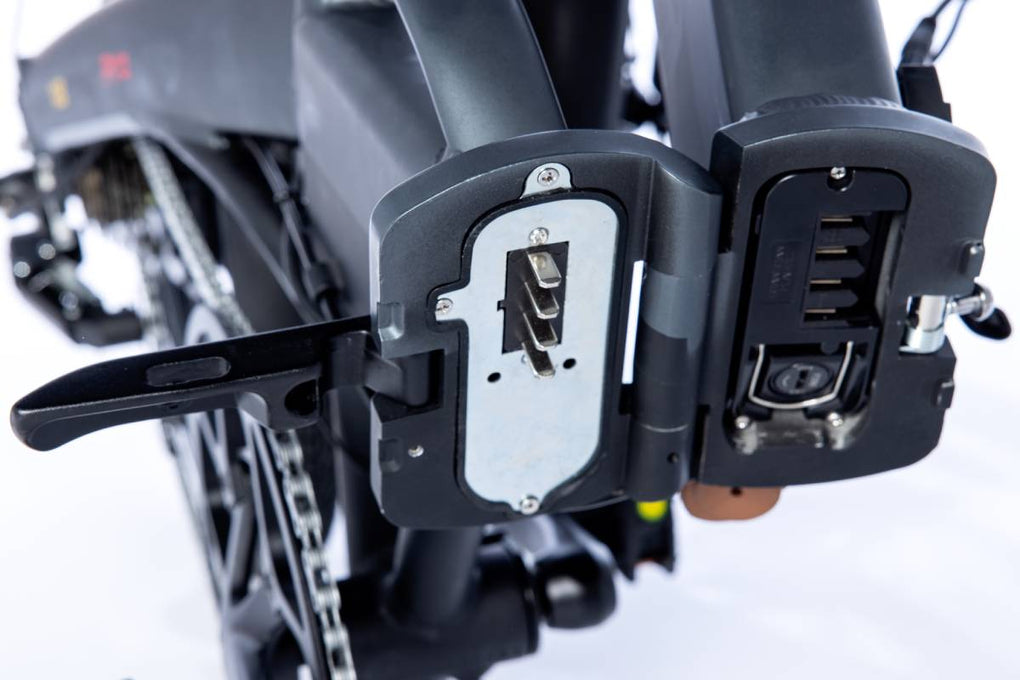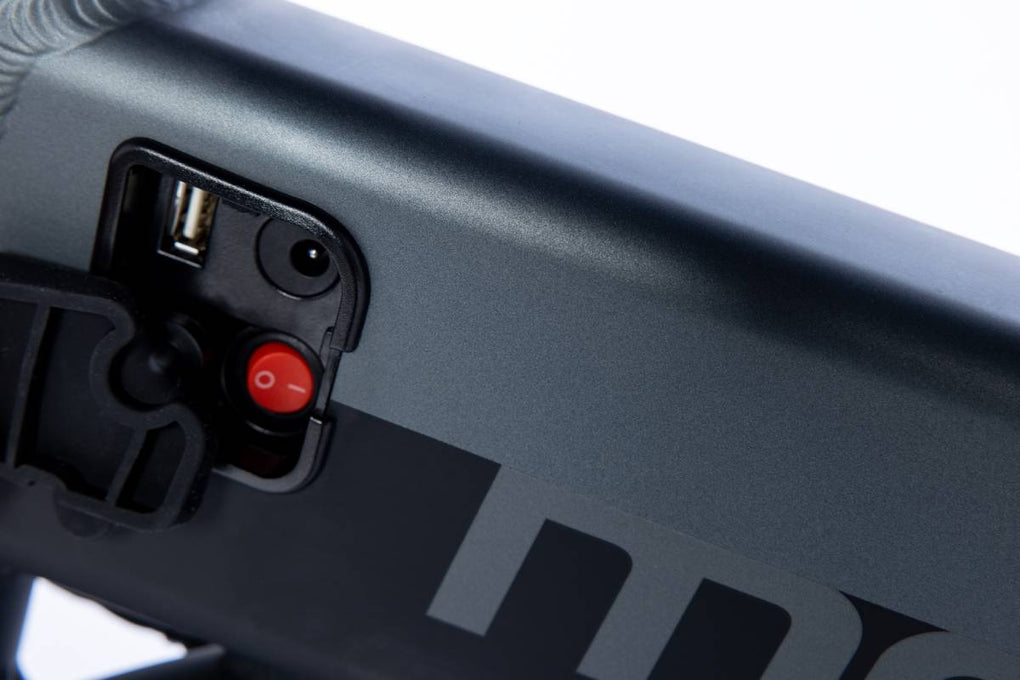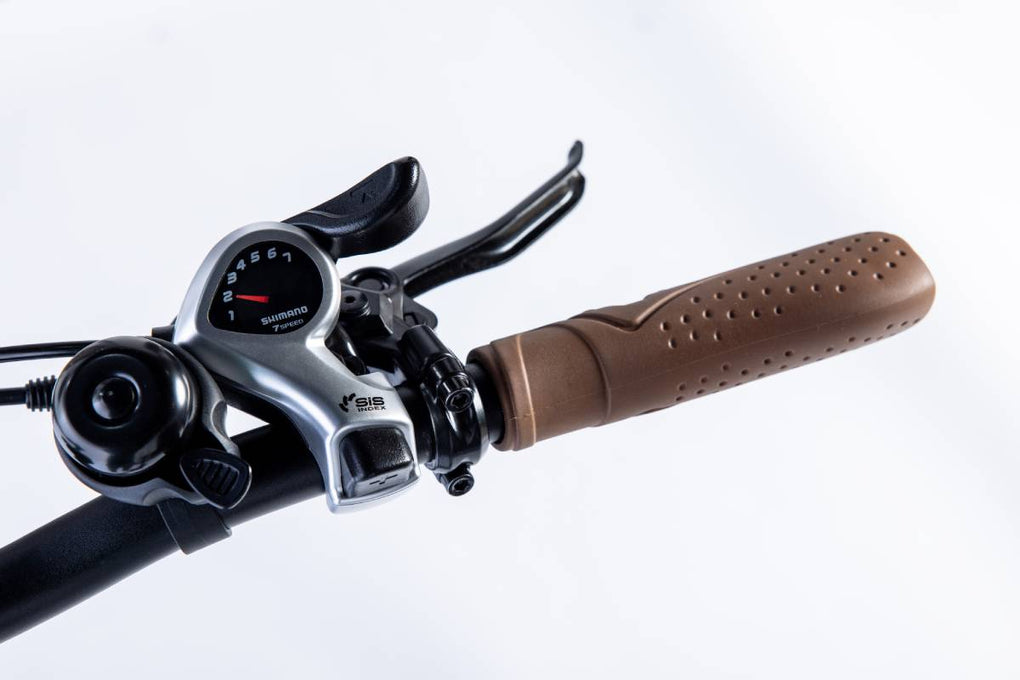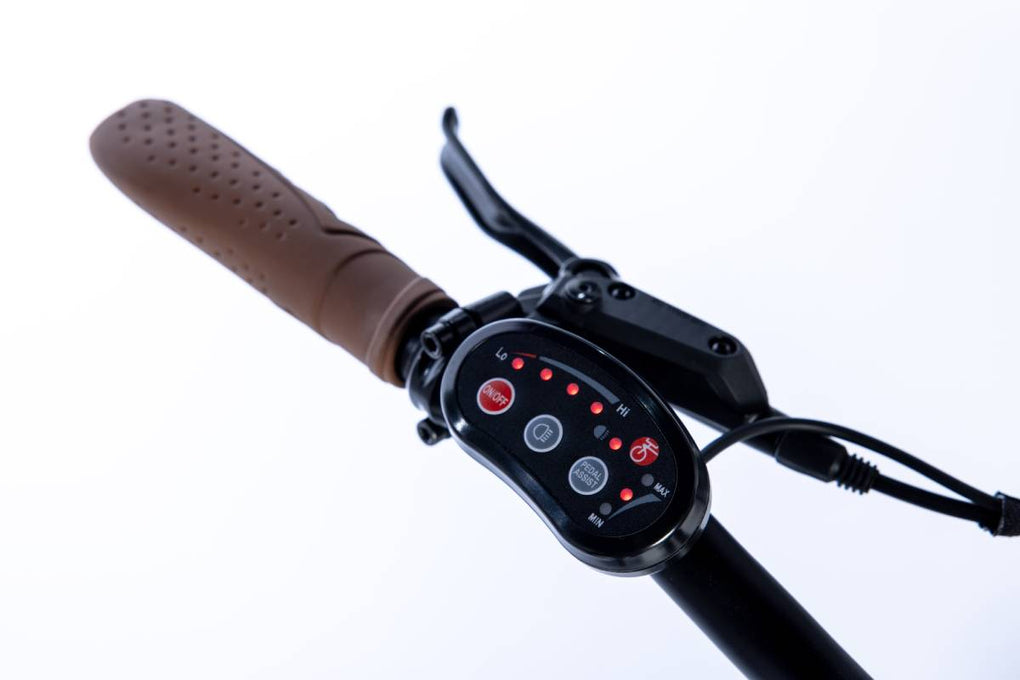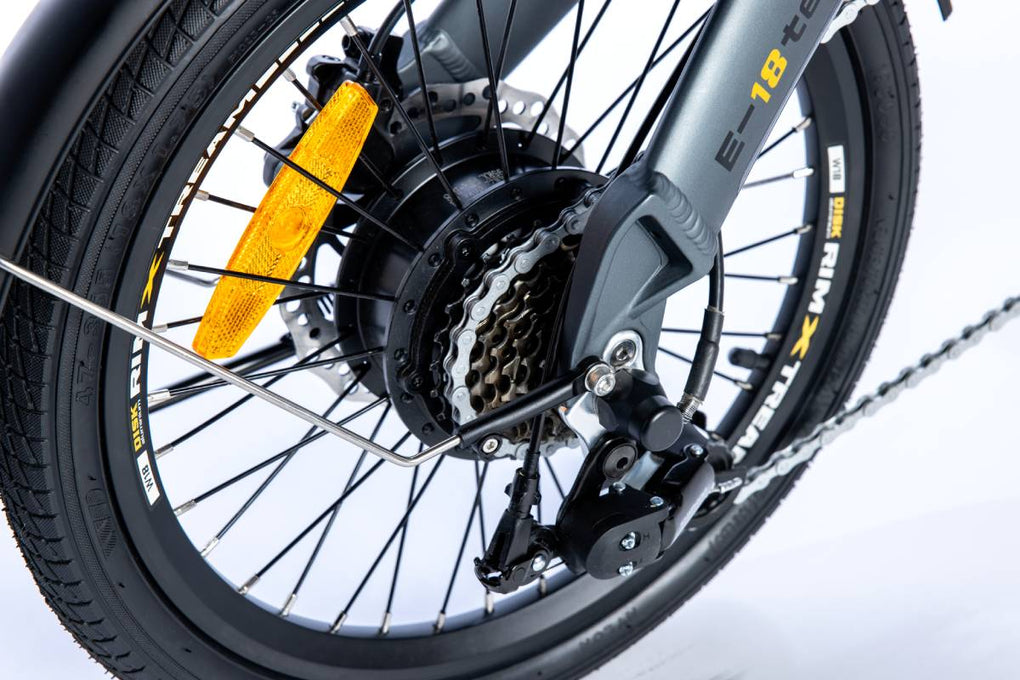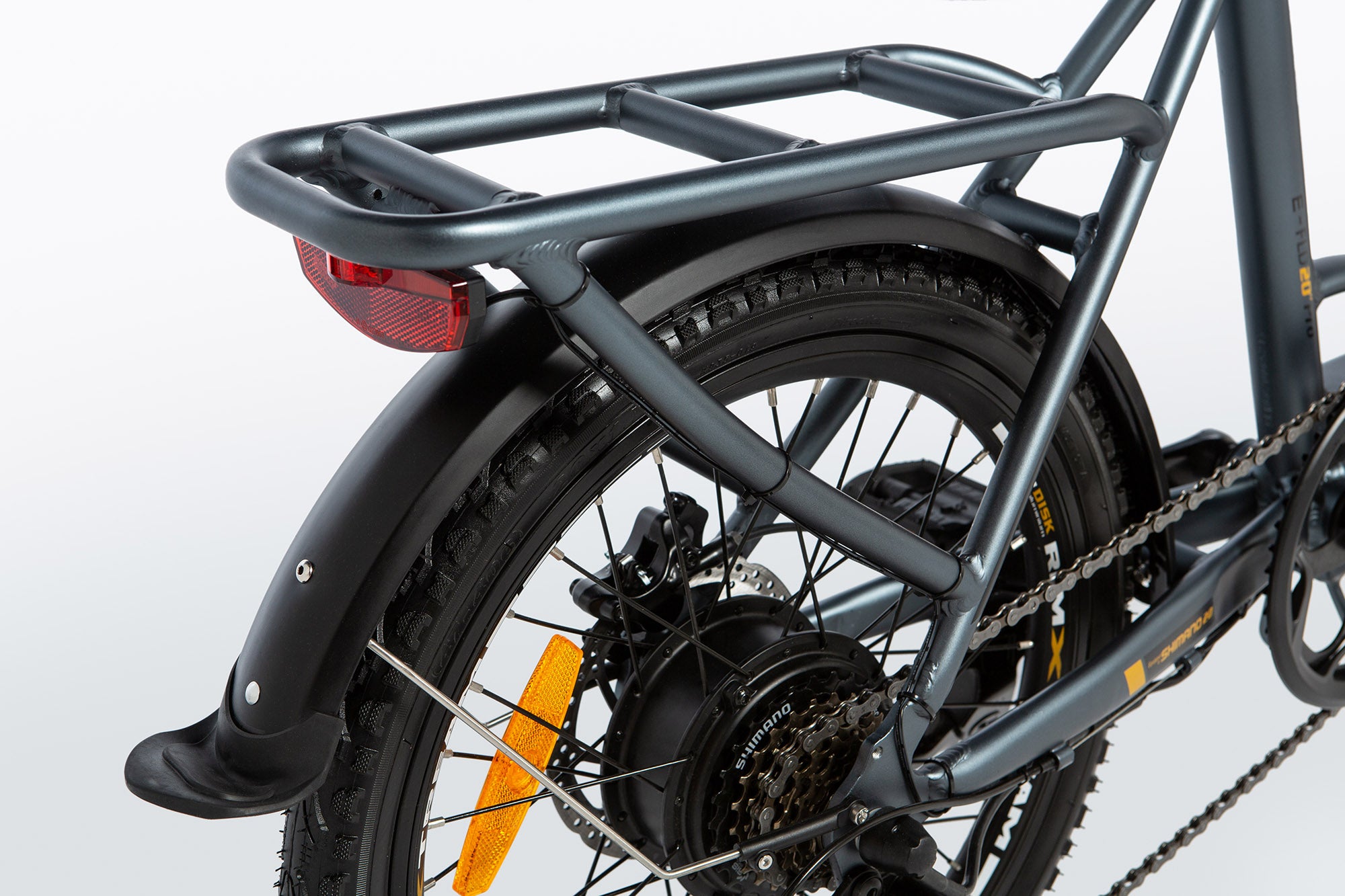
Manufactured in Europe

Straight from the factory

Lifetime warranty on frame
VBONUS VELO FRANCE
Aluminium frame
Foldable - Frame (in 2 parts) / pedals / handlebar
Folded dimensions 88x72x40cm
Brushless Motor 250W
Lithium battery 36V 9Ah (324Wh)
Removable battery
Shimano 7 speeds transmission
Shimano RD-FT35A rear derailleur
Shimano SL-TX50 shift lever
Shimano MF-TZ500-7 sprocket
Single chainring 60T
3 levels of assistance and latest generation screen indicating:
- Battery capacity
- Level of pedal assistance
Hydraulic disc brakes
Aluminium stem
Adjustable aluminium handlebar
Aluminium crankset
Adjustable rear rack
18" aluminium wheels
Front and rear lights
Saddle with leather look
Ergonomic grips
Bell, stand, mudguards
Maximum speed 25km/h
Charging time 3 hours
Range up to 50 km - In eco mode
A 100% urban, elegant, lightweight, and reliable folding electric bicycle, ideal for effortless city commuting thanks to its assisted pedaling system. Regardless of the distance or terrain, thanks to its 250W motor and 3 levels of assistance. No more effort when starting from traffic lights or uphill. Avoid traffic jams and overcrowded public transport, opt for an ecological and safe alternative with our new E18teenPro. Lightweight, thanks to its aluminum frame, as well as some components such as handlebars, stem, and cranks also in aluminum. The battery is hidden inside the frame and is removable. The LCD screen, installed on the handlebars, informs us of the level of pedal assistance and the remaining battery capacity. It is equipped with Shimano gears, 18-inch wheels, and hydraulic disc brakes. It also has front and rear LED lights, mudguards, a rear luggage rack, bell, comfortable seat, ergonomic grips, and an adjustable handlebar height for guaranteed comfort and optimal riding.
More about autonomy
The battery of an electric bicycle is a kind of energy reservoir for the assistance system. The autonomy of the battery is completely linked to the bicycle and depends on many parameters and factors that have a direct influence. It can vary from one to three times (and even more) depending on:
A) Topography (flat, moderate relief, high relief) - Type of route- Urban: with many stops/starts that consume energy
- In the countryside: more fluid and linear
- On mountain trails with ascents where electric assistance will test the battery for a sustained period, with routes where the difference in altitude can be very significant overall
- Example of a Dutch bicycle weighing 25 kg with a very upright position of the cyclist that offers significant air resistance for a person weighing 90 kg "will consume" automatically more than a person weighing 70 kg.
- Type of rubber, structure, size, but above all the optimal inflation of the tires! Using an electric bicycle with underinflated tires can represent a loss of autonomy (in km) of 30%.
- In cold weather, a battery naturally loses its autonomy. The optimal temperature is between 15 and 25°C.
- If the user is riding in eco mode, of course, they will be able to cover a greater distance than in Turbo mode.
The integration of the battery into the frame gives it additional rigidity and better weight distribution, making the bicycle more dynamic. The battery is also better protected in case of impact.
48V 13Ah Battery (624Wh) = 120Km* - 70/75kg person in eco mode.
36V 16Ah Battery (576 Wh) = 80km * - 70/75kg person in eco mode.
36V 10Ah Battery (360 Wh) = 70Km * - 70/75kg person in eco mode.
How many kilometers can I travel with my electric bicycle? This is the big question we ask ourselves when we want to buy an electric bicycle, and the answer is complex, as it depends on many factors.The first and main factor regarding the autonomy of a fully charged battery is the energy stored in it, which we quantify in watt-hours (Wh) and obtain by multiplying the volts of the battery (V) by the ampere-hours (Ah), for example, a 48V13Ah battery has an energy at full charge of 624Wh, and a 36V16Ah battery has an energy of 576Wh.
Once we have a clear understanding of the concept of energy, we need to consider the power of the motor, which will determine the consumption of this energy. A bicycle for legal use in the EU can have a motor with a maximum nominal power of 250W, but it does not consume the same when working at the limit of its capacity on a slope of more than 20% (it can have peak consumption of close to 150% of its nominal power) as when we use it calmly on a flat surface.
Once we understand this, we can also say that it is of no use if the cyclist climbing a 20% slope does so at a low assistance level and he does most of the pedaling work, while the cyclist on the flat ground goes with a high assistance level and makes no effort, leaving all the work to the motor... To this factor, which is evidently key in autonomy, we can add that factors such as the weight of the cyclist, their position, pedaling cadence, and the number of starts and stops also influence to a lesser extent, as starts cause consumption peaks.
The type of terrain (hill or flat), surfaces (asphalt or road), and even the wind (headwind) and the type and geometry of the tire also have consequences.
For all these reasons, it is very difficult to provide precise and reliable information on the autonomy of the bicycle. The information we provide about the autonomy of our products is for a person weighing 75kg with normal use of the bicycle, that is, mountain bikes with a combined use of roads with ascents and descents, urban bikes with trips in the city with many start-stop cycles, etc.
We do not advertise maximum autonomies, but real ones with tests without seeking especially low consumption. We have achieved autonomies of more than 200km seeking maximum efficiency, but we understand that it would be dishonest to advertise them since the use of resources was not normal.
We can only add that the aspect that highlights Moma electric bicycles over the competition is precisely autonomy, 100% of professionals who have tested them have been impressed with this data, for us, it is essential in this type of vehicle, and we work day by day to improve it as much as possible with batteries with high energy storage capacity and very efficient motors that consume minimal energy.
Unboxing Moma E-18TEEN
Geometría





















